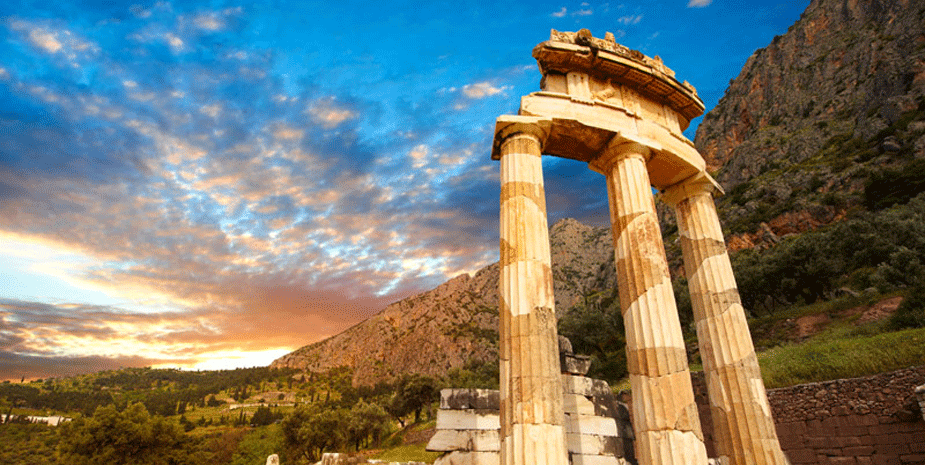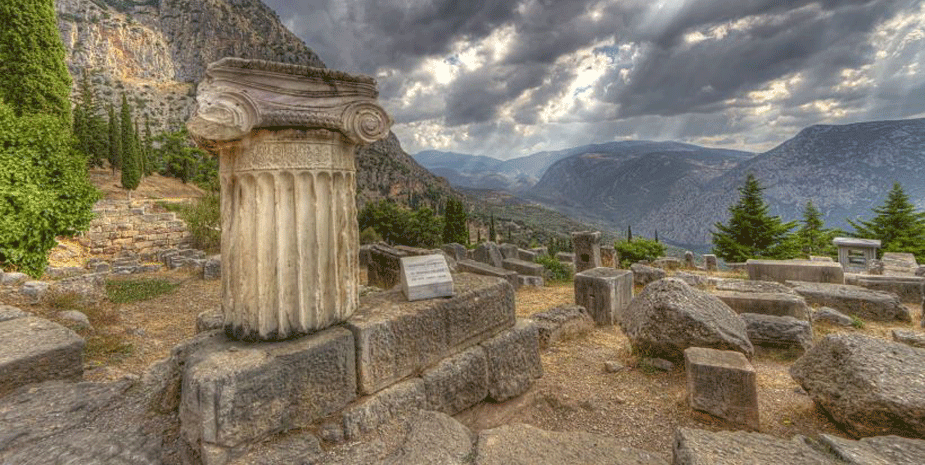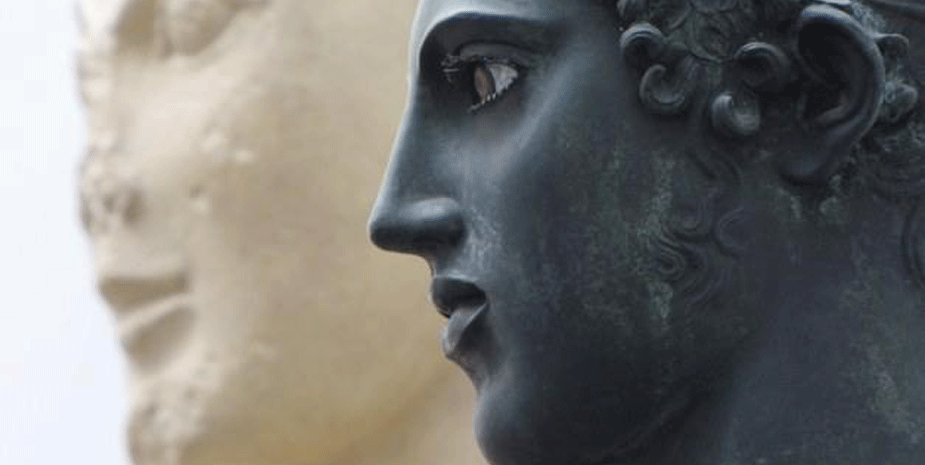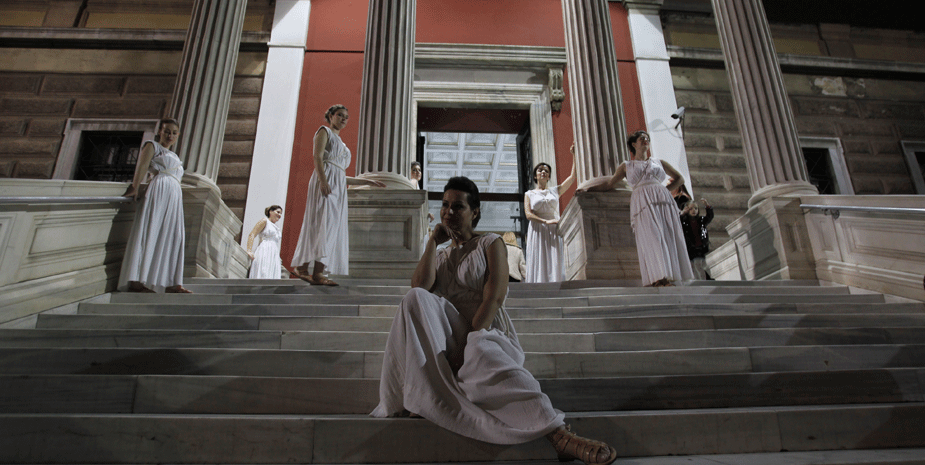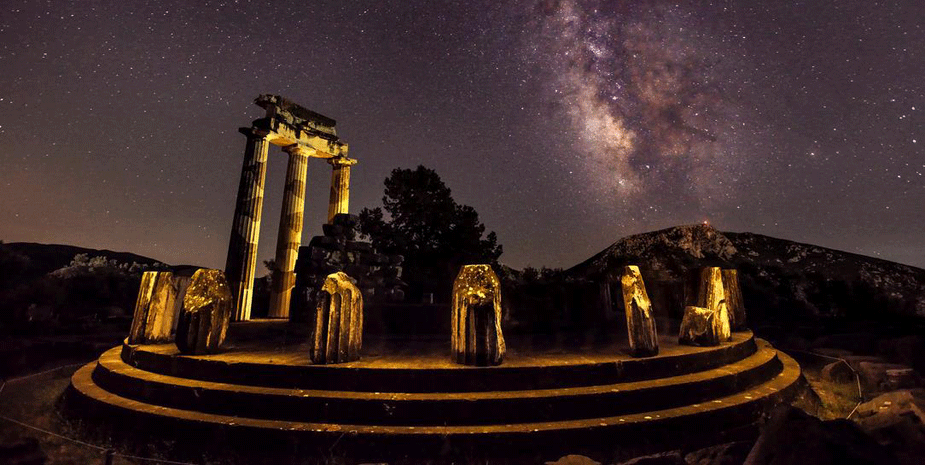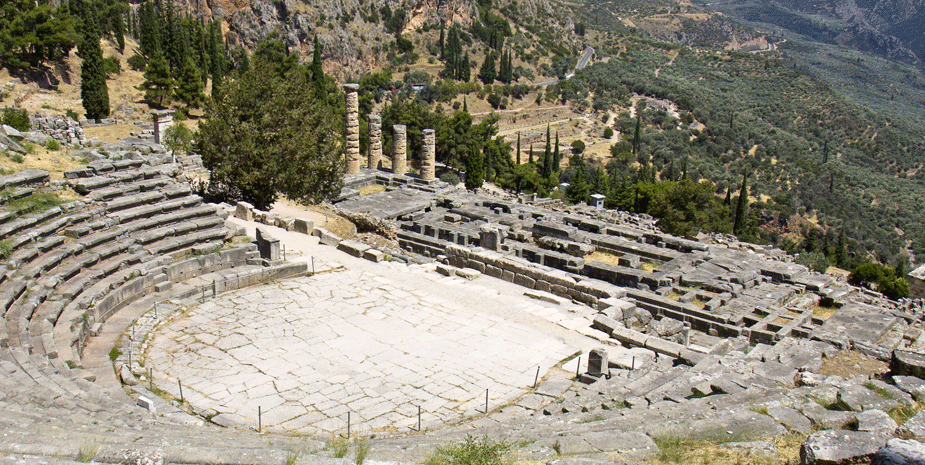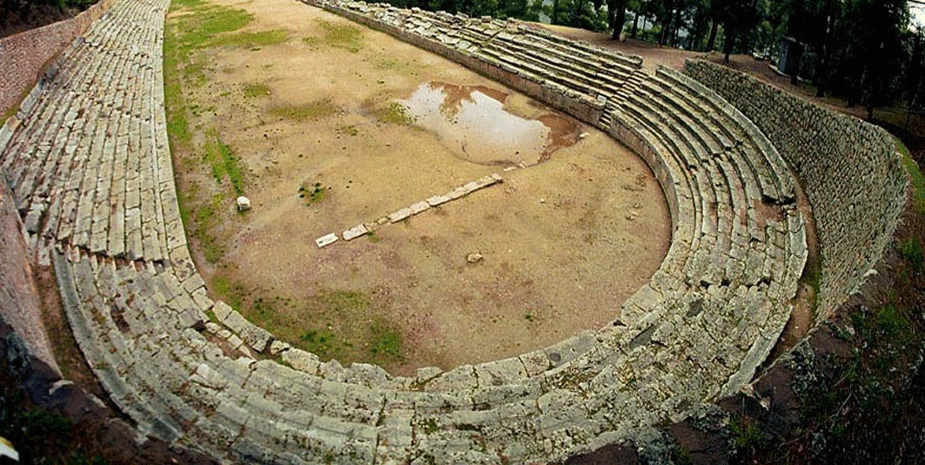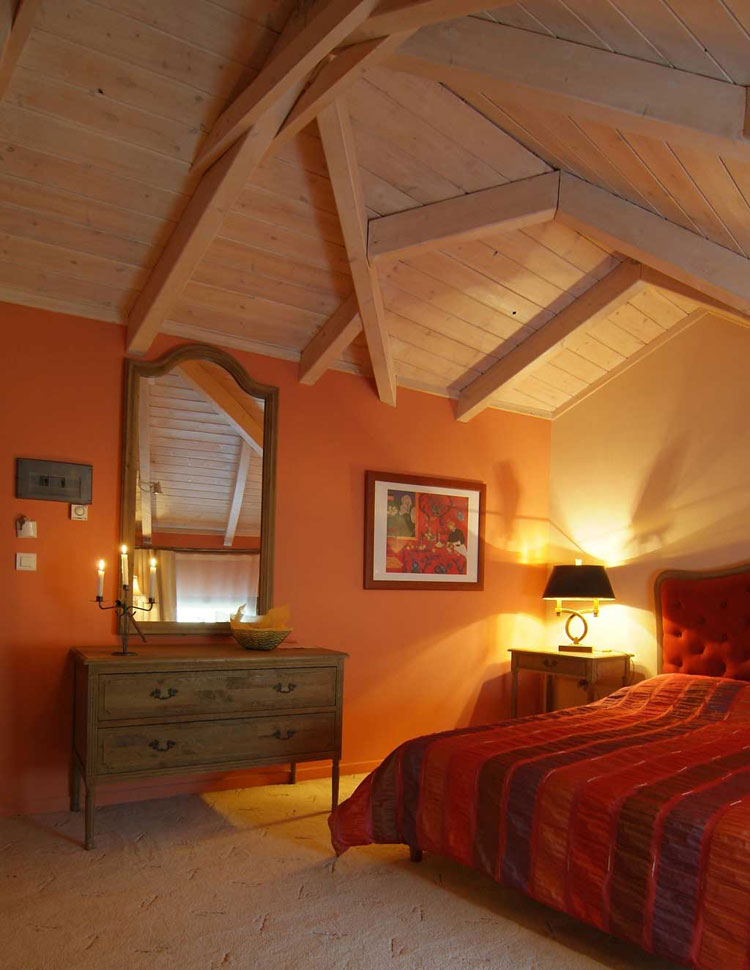Known as the "navel of the earth" are the point established and flourished the most important religious center in antiquity. Indeed, the archaeological site was declared in 1987 by UNESCO monument. "Stretched" on the southern slopes of Parnassus today maintain undiminished the historical-archaeological interest of visitors, covering at the same time and their current needs.
What to see / what to do:
1. On Castalia Fountain: You spend enough time to explore the archaeological site of Delphi. Beware, because here the signs are not very usable when you need to be observant and quite possibly prepared in advance for your basic attitudes. We begin with the Kastallia Fountain. In this sacred source washed Pythia, the priests and the temple staff, but also theopropoi (those wishing to consult the oracle and oracle), while the water gushed from the spring was cleaned and the temple of Apollo. The first fountain dating to 600-590 BC and was located near the ancient road (the fountain that stands today next to a public road). There was the Lower Castalia with a built basin and a paved courtyard with stone benches spread out before her. The newer form is that of the Rock Kastalias dating around the 1st century BC, about 50 m. Above the point was the archaiki.Tip:
The Castalia located in the ravine of Fedriadon, the rock called Flempoukos (in ancient times was known as Yampeia), and according to tradition was named after a nymph who fell at source in order to be saved from the chase of Apollo in love. The water reached the homonymous fountain between the ancient gymnasium of Delphi and the sanctuary of Apollo through a pipeline.
Daily: 08.00-15.00 (last entry at 14.40)
Prices: € 6, € 3 (reduced), ticket (Delphi, Delphi Archaeological Museum): EUR 9 EUR 5 (reduced)
Info: Delphi, 22650 82312
2. Athena Pronaia Dome and the Treasury of the Athenians: The Dome attracts the eye and interest of all those who follow closely the sanctuary of Athena Provident, located between the newest temple of Athena and the treasure of Massalioton. Within walking distance is the Ancient Gymnasium that should not be missed and included the major attractions of the archaeological place.Its Treasury of the Athenians on the other localized on the Sacred Way, opposite the treasures of Syracuse and Cnidian, next to the parliament city of Delphi. The building of Parian marble is Doric and has the form of the temple, as is the case with most treasures. The reliefs that adorned depicting labors of Hercules and Theseus, while the walls of several inscriptions surviving texts that give a lot of information about the ancient festivals and customs, as well as two hymns to Apollo, who helped in the study of music.
Daily: 08.00-15.00 (last entry at 14.40)
Prices: € 6, € 3 (reduced), ticket (Delphi, Delphi Archaeological Museum): EUR 9 EUR 5 (reduced)
Info: Delphi, 22650 82312
3. The Temple of Apollo: The most important monument in the archaeological site of Delphi, the Temple of Apollo, dominated the center, while the interior was decorated with statues and offerings to the god. It is inextricably linked with the oracle, as a hatch that was in ecstasy. According to modern scholars even supported that Pythia anamasouse bay leaves breathing fumes from burning herbs.
The ruins of the church that we find today in the archaeological site date back to 330 BC It is a characteristic Doric building sample, with 6 columns on the short sides and 15 on the long, while the interior of the temple data saved is minimal.
Tip: The crafted by the Athenians act sculptors and Androsthenes pediments of the temple was made of Parian marble depicting Apollo with the Muses (east) and Dionysus among Thyiades (western).
Daily: 08.00-15.00 (last entry at 14.40)
Prices: € 6, € 3 (reduced), ticket (Delphi, Delphi Archaeological Museum): EUR 9 EUR 5 (reduced)
Info: Delphi, 22650 82312
4. The Holy Road: The road started from the mosque entrance of Apollo and ended at the altar of the Chians and the temple is also known as the Sacred Way of Delphi. Is the path followed whenever visiting Delphi the theopropoi (those addressed to the oracle to seek an oracle), in order to get priority for the divination of Pythias. To do this, however, first had to make a sacrifice at the altar, which was located at the highest point of the trail. Since this process excluded the citizens of the city and some individuals, such as Corinthians, Naxos, Thebans etc.
The establishment is placed in the Archaic period, while the road today that meets the visitor dating from the Byzantine era. The trail was uphill call and a length of about 200 m., Ending in front of the holy altar.
Tip: Visitors today follow the same road to drive in the altar area.
Daily: 08.00-15.00 (last entry at 14.40)
Prices: € 6, € 3 (reduced), ticket (Delphi, Delphi Archaeological Museum): EUR 9 EUR 5 (reduced)
Info: Delphi, 22650 82312
5. The Ancient Stadium of Delphi and Ancient Theatre: One of the best preserved sites of its kind, the ancient Delphi stage located at the highest point above the sanctuary of Apollo, northwest of the theater. To head to the entrance, you must take the steep path you will come across in the left lane of the theater. Here, centuries before thousands of spectators watched sports agonismata.Tip: The length of the track at the Ancient Stadium reaches 177.55 m. And width of 25.50 m., And I say that the Roman stage. The design of the stadium resembles a hairpin with two parallel bearing zones to meet in a semicircle. The total capacity reached an estimated 5,000 spectators. The ancient stadium of Delphi is unique throughout Greece with arched triumphal entrance.
Daily: 08.00-15.00 (last entry at 14.40)
Prices: € 6, € 3 (reduced), ticket (Delphi, Delphi Archaeological Museum): EUR 9 EUR 5 (reduced)
Info: Delphi, 22650 82312
6. To Delphi Archaeological Museum: This is undoubtedly one of the most important museums of our country. In Delphi archaeological museum in fact reach 700,000 visitors each year, which makes it the second most visited after the Acropolis. Here, presented in the best way the story of the famous Delphic sanctuary and the famous oracle, through a rich collection of sculptures, statues etc.
Tip: You should not miss exhibits include the statue of the Charioteer, the Sphinx of Naxos, sections of the frieze of Siphnian treasure, fragments of metopes with depictions of Herakles feats of the treasure of the Athenians, the navel and the statues of mythical brothers Kleobis and Biton.
Also, in the lobby works publications shop and café, which were added to the museum's potential after the recent renovation.
Daily: 08.00-15.00 (last entry at 14.40)
Prices: € 6, € 3 (reduced), ticket (Delphi, Delphi Archaeological Museum): EUR 9 EUR 5 (reduced)
Info: 22650 82312, http://odysseus.culture.gr/
